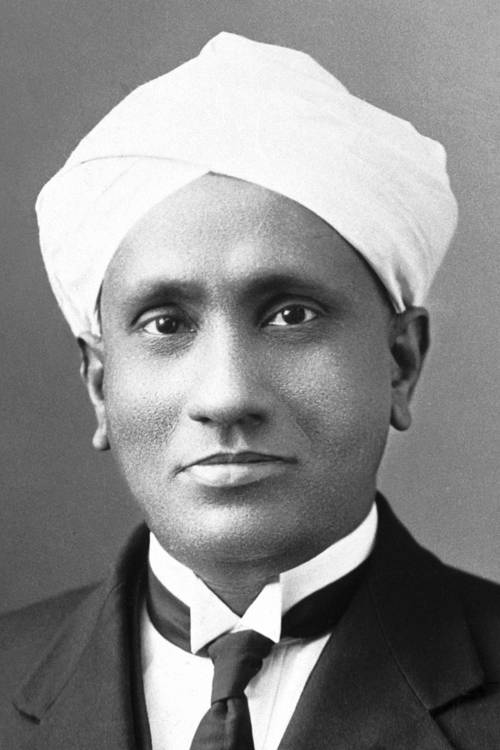
FAQ About C. V. Raman

Who was C. V. Raman?
C. V. Raman was an Indian physicist notable for the discovery of the Raman effect. He was born on November 7, 1888, in Tiruchirapalli, India, and went on to become one of the most esteemed scientists in the field of optical physics. His work earned him the Nobel Prize in Physics in 1930.

What is the Raman effect?
The Raman effect is a phenomenon in physics that refers to the scattering of light and the change in its wavelength that occurs when light is deflected by molecules. C. V. Raman discovered this effect in 1928, which showed that light does not just scatter at the same wavelength but also at various wavelengths indicative of different substances.

Why did C. V. Raman win the Nobel Prize?
C. V. Raman won the Nobel Prize in Physics in 1930 for his pioneering work on the scattering of light and the discovery of the Raman effect. This discovery was significant because it allowed scientists to study molecular and atomic structures through light scattering, contributing substantially to the fields of chemistry and solid-state physics.

What are some applications of the Raman effect?
The Raman effect has numerous applications across various fields. It is used in Raman spectroscopy, a technique commonly used in chemistry for material analysis, allowing for the identification of chemical compositions and structures. It is also utilized in fields such as pharmaceuticals, nanotechnology, and even art restoration to analyze pigments and dyes.

Did C. V. Raman conduct research in other fields?
Yes, besides his work on the Raman effect, C. V. Raman conducted significant research in acoustics, particularly on musical instruments, as well as on the diffraction of light. He also studied the optical properties of numerous substances, including liquids, solids, and colloids.

Where did C. V. Raman receive his education?
C. V. Raman completed his schooling in Visakhapatnam and attended Presidency College in Madras (now Chennai), where he obtained a bachelor's degree in 1904 and a master's degree in Physics in 1907. His academic excellence set the foundation for his illustrious career in physics.

What is Raman spectroscopy?
Raman spectroscopy is an analytical technique inspired by the Raman effect. It involves the scattering of monochromatic light, usually from a laser, on a sample. It provides information about vibrational, rotational, and other low-frequency transitions in molecules, making it highly useful in determining the molecular composition and structure of a material.

How did C. V. Raman's discovery impact science?
The discovery of the Raman effect had a profound impact on science, especially in the fields of physics and chemistry. It provided a new method for studying molecular structures and dynamics, enabling researchers to gain deeper insights into the composition of materials and biological molecules, ultimately leading to advancements in a variety of scientific disciplines.

What positions did C. V. Raman hold during his career?
C. V. Raman held several pioneering positions throughout his illustrious career. He was the first Indian director of the Indian Institute of Science in Bangalore and later established the Raman Research Institute in 1948, where he served as the director until his death in 1970. During his career, he also worked as a professor of physics at the University of Calcutta.

What was C. V. Raman's contribution to music?
C. V. Raman made notable contributions to the field of acoustics, particularly in the study of musical instruments. He conducted research on the sound of the violin and other instruments, exploring the scientific basis of musical sound and how it correlates with the structure of the instrument, which added valuable insights to the field of acoustics.

What legacy did C. V. Raman leave behind?
C. V. Raman's legacy includes not just his scientific discoveries but also the institutions he established and inspired. His work paved the way for future research in quantum mechanics and spectroscopy. Additionally, he inspired a generation of scientists in India and played a crucial role in establishing and advancing India's presence in the global scientific community.

How is C. V. Raman honored in India today?
C. V. Raman is widely honored across India for his scientific contributions. National Science Day is celebrated annually on February 28 to mark the discovery of the Raman effect. Many institutions and awards, including the Raman Research Institute and the C. V. Raman University, have been named in his honor to commemorate his impact on science.

When did C. V. Raman pass away?
C. V. Raman passed away on November 21, 1970, leaving behind a remarkable legacy that continues to inspire scientists and researchers. His contributions to physics and his discovery of the Raman effect remain a cornerstone in the study of material properties and molecular structures.

What did C. V. Raman discover about the diffraction of light?
C. V. Raman conducted studies on the diffraction of light, which involves the bending and spreading of light waves around obstacles and apertures. His research provided detailed insights into the physical properties and behavior of light, contributing to the broader understanding of optical phenomena.

Was C. V. Raman involved in any scientific organizations?
Yes, C. V. Raman was actively involved in numerous scientific organizations. He was a founding member of the Indian Academy of Sciences and played a vital role in promoting scientific research and education in India. He was also associated with the Royal Society of London and numerous international scientific associations.

What is a common misconception about C. V. Raman's work?
A common misconception is that C. V. Raman worked solely on the Raman effect; however, his research spanned across various domains in physics, including acoustics, optics, and crystal dynamics. Although the Raman effect is his most famous work, his contributions to science were broad and varied.

How did C. V. Raman contribute to education in India?
C. V. Raman significantly contributed to science education in India through his work at the Indian Institute of Science and the establishment of the Raman Research Institute. He advocated for quality scientific education and research, nurturing many young scientists and fostering a scientific temperament in the country.

What influenced C. V. Raman's interest in physics?
C. V. Raman's interest in physics was shaped by his early exposure to science and mathematics, as well as the scientific environment at Presidency College in Madras. His natural curiosity and insightful early teachers significantly influenced his decision to pursue a career in physics, ultimately leading to his groundbreaking work.

Where is the Raman Research Institute located?
The Raman Research Institute, founded by C. V. Raman in 1948, is located in Bangalore, Karnataka, India. It remains one of the premier research institutes in the country, continuing to uphold Raman's legacy of scientific exploration and discovery.

What awards did C. V. Raman receive apart from the Nobel Prize?
Besides the Nobel Prize, C. V. Raman received numerous awards and honors for his contributions to science, including the Bharat Ratna, India's highest civilian award, in 1954. His recognition extended globally, and he was also awarded the Franklin Medal, among others, reflecting his worldwide scientific impact.
